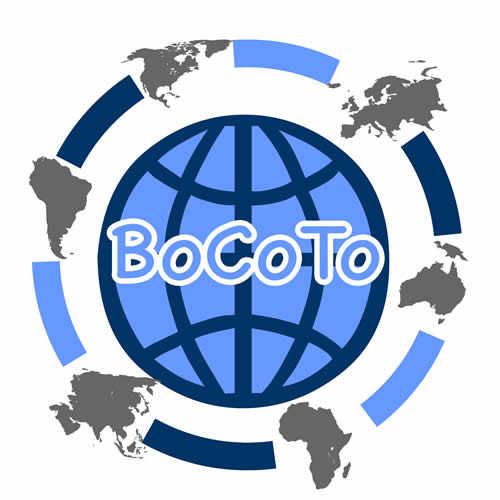Description of the CDT initiative:
The Tourism Development in Eastern Anatolia Project (TDEAP) was a joint sustainable tourism project operated by the Turkish Ministry of Culture and Tourism, UNDP and Anadolu Efes Company. Having taken place between April 2007, and October 2012, the project recognizes community-based tourism as a crucial sector in its efforts at economic growth in the region. The project envisages the local community as the primary beneficiary for capacity building activities and tourism revenues. However, this is fundamentally a tourism development project, which primarily strives to utilize the sustainable tourism potential of the destination
Geographic location:
Eastern Anatolia
What problem they are trying to solve? What have they accomplished?
The general goal of the project was to contribute to the living standards of local people by enhancing tourist activities in Coruh Valley in the Northeastern part of Turkey. Within this goal, the three specific objectives are defined as:
1) tourism product development;
2) promotion of the region and the project;
3) enhancement of local capacities.
The activities carried out concerning each objective were:
Tourism Product Development:
1. Tourism potential assessment and inventory development (mainly diverse natural life, authentic cultural structure and heritage, bird-watching, mountaineering, camping, water sports, trekking, gastronomy).
2. Publishing of brochures for natural and cultural assets (e.g. historic Georgian churches).
3. Training programs on mountaineering, camping, mountain biking, bird-watching and botanic education (more than 150 participants).
4. Bird-watching festivals.
5. Logistical support to specialized tours (botanic, bird-watching, butterfly-watching, rafting, etc.).
6. Promotion of handicrafts (establishment of a ceramics workshop, training programs delivered to women participants, development of authentic gift items).
7. Promotion of local cuisine (training programs for 40 locals, publishing of a culinary book on local delicacies, organization of gastronomy festivals and cooking contests).
8. Establishment of homestays.
Promotion of the region and the project:
1. National and international distribution of promotional brochures for the region (10,000 tri-fold map/brochures, 4,500 bird-watching brochures).
2. Instructive signs for natural and cultural assets (30 renewed, 13 newly added).
3. Broadcast of a one-hour documentary on national TV about the tourism potential of the region.
4. Promotional collaboration with national associations for tour guiding, hoteliers and travel agencies.
5. Participation in international, national and regional tourism fairs, meetings and conferences (12 participations).
6. Participation in academic conferences (25 posters/presentations/exhibitions).
7. Social media utilization (Facebook account).
8. Establishment of tourism information offices and gift shops.
Enhancement of local capacities:
1. Training programs and certifications (i.e. topics include tourism awareness, social development and organization, women’s involvement in social development, project cycle management, entrepreneurship, grant and proposal writing, packaging of local products and home-stay management).
2. Establishment of two local associations, support for 18 non-government organizations (NGOs) in tourism promotion efforts.
3. Two study visits by local government, tourism entrepreneurs and women’s groups to two other destinations.
4. Training support for home-stay start-ups and small–scale grants to 13 local tourism entrepreneurs.
5. Support for local government’s preparation of a master plan for strategic development and tourism.
6. Advocacy programs (lobbying for the region in universities, Ministry for Environment and Forestry and National Development Agencies).
7. Linking national and international funds to individual local projects (approx. $365,000 in grants awarded).
Benefits:
Increased international and domestic tourism movements to the region directed by tour operators and travel agencies.
Increased income from tourism activities especially among younger generations and women (approx. $560,000 direct injection to total household income).
Ownership of tourism accommodation facilities (bed & breakfasts) by locals (100% increase bed capacity in the region).
Increased local capacities pertaining to tourism, food & handicraft production.
Increased inclusion of women and youth in the tourism workforce (esp. homestays, souvenir and local food production).
Special interest tourism promoted in the region (gastronomical, trekking, mountain-biking, rafting, canoeing, sailing, bird-watching).
Challenges and Facilitators:
Prior to the launch of project activities, UNDP had identified major weaknesses as lack of tourism facilities, low education level among locals pertaining to tourism service, lack of social consciousness and awareness about the cultural environment as well as tourism values.
On the other hand, local willingness for development, welcoming nature of the community, and the presence of an un-utilized workforce facilitated the successful implementation of the project objectives. During the implementation, the major challenges were the difficulty in reaching community members in distant settlements with limited socio-economic availabilities.
The fact that youth were not retained within the community due to the lack of economic opportunities was also seen as threats to community involvement in the initiatives. However, the project could be seen as a success story since most of these issues were largely resolved through intense capacity building programs that were targeted at the community and the strong participation of youth and women in the workforce.
